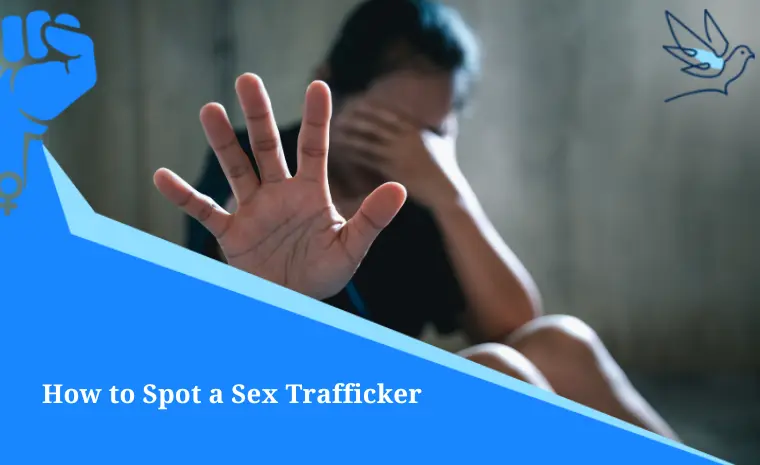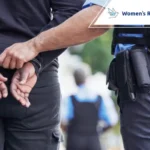How to Spot a Sex Trafficker
People have fought for freedom for centuries. They dream of a world where no one is forced to serve others or be victims of any form of violence. It’s heartbreaking that slavery still exists in different forms, causing immense suffering for millions of vulnerable people. Despite our generations of struggle, the battle is far from over.
Human trafficking is a recurring problem in our society. Countless abused women and children are innocent victims of this terrible crime. It’s not always easy to identify these victims or the perpetrators, as traffickers can be anyone, even those you least expect.
In this article, we are going to discuss:
- Human Traffic Statistics in the U.S.
- How Perpetrators Scam Victims
- How to Spot a Sex Trafficker
- How Victims Can Fight for Justice
If you or someone you know has been a victim of sex trafficking, it’s possible to seek justice and make the responsible accountable.
Human Traffic Statistics in the U.S.
Human trafficking is the recruitment, transportation, transfer, harboring, or receiving of people through force, fraud, or deception for exploitation and profit. This crime impacts individuals of all ages and backgrounds and occurs worldwide. The true extent of human trafficking and modern slavery is uncertain, but approximately 49.6 million victims are believed to be trapped in modern-day slavery.
Sex trafficking, a modern-day form of slavery, forces victims of human trafficking to participate in sexual activities. Victims of this devastating crime not only need to face emotional trauma, but also physical violence and malnutrition that affects their body and lead to disease.
In California, sex trafficking is the top crime. By 2021, there were 1,023 reported cases, showing an increase from 87% to 89%. To combat sex trafficking in our state, it’s crucial to recognize victims and identify sex offenders in order to report the crime of trafficking.
How Perpetrators Scam Victims
Social media and the internet have a significant impact on people’s lives. Their choices regarding food, music, purchase, and reading materials are often influenced by algorithms and current trends. While the internet offers several advantages, there is also a darker side that exposes us to danger and reveals the extent of human depravity.
Some of the most common ways to attract victims of human trafficking are online ads, these postings can be directed to job searches, the promise of love, a new way of living or study programs, and opportunities for professional growth. As the internet can be anonymous, it’s not so easy to detect this kind of scam at first, but how to spot sex trafficking ads?
Spotting sex trafficking ads online can be challenging, but there are some key indicators you can look for to help identify potentially exploitative content. Here are some tips to help you recognize possible sex trafficking ads:
Explicit Language
Ads with explicit or sexually suggestive language may indicate a potential trafficking situation. Look for signs of coercion or sexual exploitation in the text.

Low-Quality Images
Traffickers may use low-quality or grainy images to obscure the identities of the individuals involved or to avoid detection.
Repeated Images
If you notice the same images being used across multiple ads or in different locations, it could be a sign of trafficking. Traffickers often reuse images to advertise victims.
Prices and Contact Information
Ads that contain unusually low prices or contact details that seem suspicious (e.g., disposable phone numbers) could be linked to trafficking.
Discrepancies in Age and Description
Be wary if the age and physical description of the person in the ad do not match, or if they appear underage.
Inconsistent Location
Ads that claim to be from a specific location but have language or writing style inconsistent with that region could be suspicious.
Controlled Communication
If the person in the ad seems to be overly controlled or limited in their communication, it might suggest a trafficker is involved.
Use of Coded Language
Traffickers may use coded language or acronyms to avoid detection by law enforcement or raise less suspicion.
Advertisements in Multiple Locations
The same ad appearing in multiple locations, especially across different cities or countries, might indicate organized trafficking networks.
If you come across an ad that you suspect may be linked to sex trafficking, do not attempt to investigate it yourself. Instead, report it to your local law enforcement or contact anti-trafficking organizations who can handle the situation appropriately.
Additionally, various online platforms have reporting mechanisms that allow users to flag potentially harmful content, including sex trafficking ads. By reporting these ads, you can help contribute to efforts to combat trafficking and protect potential victims.
Victim of a sex crime?
How to Spot a Sex Trafficker
Spotting a human sex trafficker can be challenging, as they operate discreetly. However, there are some red flags and signs that you can look out for to help identify potential sex trafficking situations, including those that may occur in hotels, which, sadly, are one of the most common places where these illegal activities occur.
Some of the warning signs to identify perpetrators include:
- Excessive control. Traffickers may exert an unusually high level of control over their victims, appearing possessive, intimidating, or even violent. They can present anxious behavior and avoid eye contact.
- Isolation. Traffickers take victims to an isolated behavior, don’t let them interact with others, do not let them speak or interrupt them firmly.
- Inconsistent Stories. Traffickers may provide inconsistent or scripted responses when questioned, particularly about their relationship with potential victims.
- Age Difference. Significant age differences between the trafficker and the victim, particularly if the victim is a minor. Arguing a familiar relationship when physical features are indistinct.
- Control of Victim’s Documents. The trafficker may control the victim’s legal documents and money, making it difficult for the victim to leave or seek help.
- Unusual payment Methods. Payment for services or accommodations may be made in cash or other unconventional methods.
- Multiple Victims. A person with several unrelated individuals under their control, especially if they seem anxious or fearful, might be involved in trafficking.
- Frequent Address Changes. Traffickers may frequently move their victims to different locations or even across state or national borders to avoid detection.
- Hotel or Travel Connections. Keep an eye out for situations where the same person frequently checks into hotels with different companions, particularly if there are signs of control or coercion.
- Excessive Secrecy. If someone exhibits an unusual level of secrecy about their personal life, relationships, or work, it could be a cause for concern.
We would think that sex traffickers would have tattoos and suspicious demeanors, as TV has taught us, but the cruel reality is that even the nicest person you know can be a perpetrator. If you suspect someone is a sex trafficker or are concerned about potential trafficking activity, do not attempt to confront the individual directly. Instead, you can report it to:
- The National Human Trafficking Hotline: You can call the toll-free number 1-888-373-7888 to reach the National Human Trafficking Hotline in the United States. This hotline operates 24/7 and will connect you with experts who can provide assistance and guidance.
- California Department of Justice: You can also contact the California Department of Justice to report any instances of human trafficking. You can find information and contact numbers on their official website.
- Call 911: If you are witnessing a situation that requires immediate attention or is an emergency, do not hesitate to call 911.
- Women’s Rights Group: One of the leading women’s rights non-government organizations that provide support and empowerment to victims of sex trafficking. They can help you seek legal justice and compensation.
How Victims Can Fight for Justice
Sex trafficking victims encounter various obstacles in their pursuit of justice. However, with proper representation and guidance, it is possible for them to find peace after enduring these horrific experiences.
In addition to physical abuse, these victims of trafficking may also suffer from emotional trauma, sexually transmitted infections (STIs), and financial burdens that impact their overall well-being and hinder their ability to care for themselves.
No one who has to go through such difficult times should continue to suffer. In California, trafficking victims can present a claim against the commercial establishment that let pass their abuse or the sex trafficker responsible for the crime.
At the Women’s Rights Group, we believe survivor victims deserve to rebuild their life and be free of the heavy and hurtful past they have to face. We are committed to providing the medical care they need and obtain the fair compensation they deserve.
Make those who hurt you accountable. Together, we can fight against sex trafficking in California. Call us now! We provide a FREE and 100% confidential consultation.






